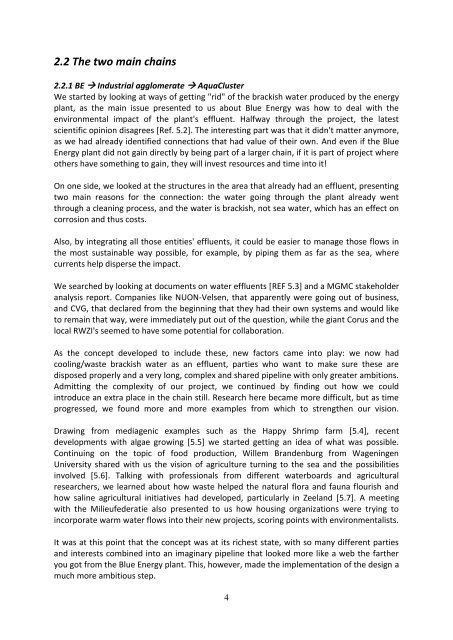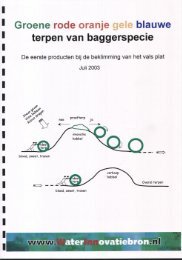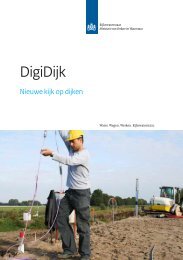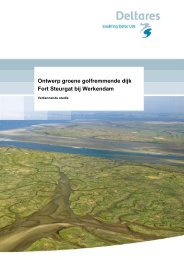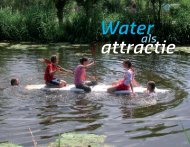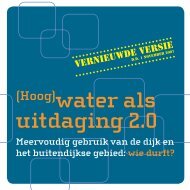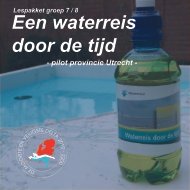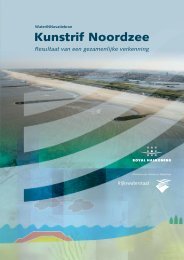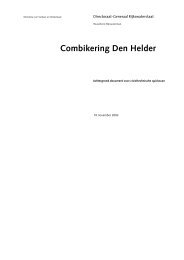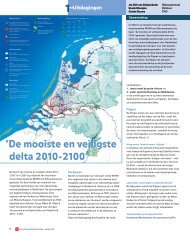Creating opportunities to adapt to climate change through innovative ...
Creating opportunities to adapt to climate change through innovative ...
Creating opportunities to adapt to climate change through innovative ...
Create successful ePaper yourself
Turn your PDF publications into a flip-book with our unique Google optimized e-Paper software.
2.2 The two main chains2.2.1 BE Industrial agglomerate AquaClusterWe started by looking at ways of getting "rid" of the brackish water produced by the energyplant, as the main issue presented <strong>to</strong> us about Blue Energy was how <strong>to</strong> deal with theenvironmental impact of the plant's effluent. Halfway <strong>through</strong> the project, the latestscientific opinion disagrees [Ref. 5.2]. The interesting part was that it didn't matter anymore,as we had already identified connections that had value of their own. And even if the BlueEnergy plant did not gain directly by being part of a larger chain, if it is part of project whereothers have something <strong>to</strong> gain, they will invest resources and time in<strong>to</strong> it!On one side, we looked at the structures in the area that already had an effluent, presentingtwo main reasons for the connection: the water going <strong>through</strong> the plant already went<strong>through</strong> a cleaning process, and the water is brackish, not sea water, which has an effect oncorrosion and thus costs.Also, by integrating all those entities' effluents, it could be easier <strong>to</strong> manage those flows inthe most sustainable way possible, for example, by piping them as far as the sea, wherecurrents help disperse the impact.We searched by looking at documents on water effluents [REF 5.3] and a MGMC stakeholderanalysis report. Companies like NUON-Velsen, that apparently were going out of business,and CVG, that declared from the beginning that they had their own systems and would like<strong>to</strong> remain that way, were immediately put out of the question, while the giant Corus and thelocal RWZI's seemed <strong>to</strong> have some potential for collaboration.As the concept developed <strong>to</strong> include these, new fac<strong>to</strong>rs came in<strong>to</strong> play: we now hadcooling/waste brackish water as an effluent, parties who want <strong>to</strong> make sure these aredisposed properly and a very long, complex and shared pipeline with only greater ambitions.Admitting the complexity of our project, we continued by finding out how we couldintroduce an extra place in the chain still. Research here became more difficult, but as timeprogressed, we found more and more examples from which <strong>to</strong> strengthen our vision.Drawing from mediagenic examples such as the Happy Shrimp farm [5.4], recentdevelopments with algae growing [5.5] we started getting an idea of what was possible.Continuing on the <strong>to</strong>pic of food production, Willem Brandenburg from WageningenUniversity shared with us the vision of agriculture turning <strong>to</strong> the sea and the possibilitiesinvolved [5.6]. Talking with professionals from different waterboards and agriculturalresearchers, we learned about how waste helped the natural flora and fauna flourish andhow saline agricultural initiatives had developed, particularly in Zeeland [5.7]. A meetingwith the Milieufederatie also presented <strong>to</strong> us how housing organizations were trying <strong>to</strong>incorporate warm water flows in<strong>to</strong> their new projects, scoring points with environmentalists.It was at this point that the concept was at its richest state, with so many different partiesand interests combined in<strong>to</strong> an imaginary pipeline that looked more like a web the fartheryou got from the Blue Energy plant. This, however, made the implementation of the design amuch more ambitious step.4


